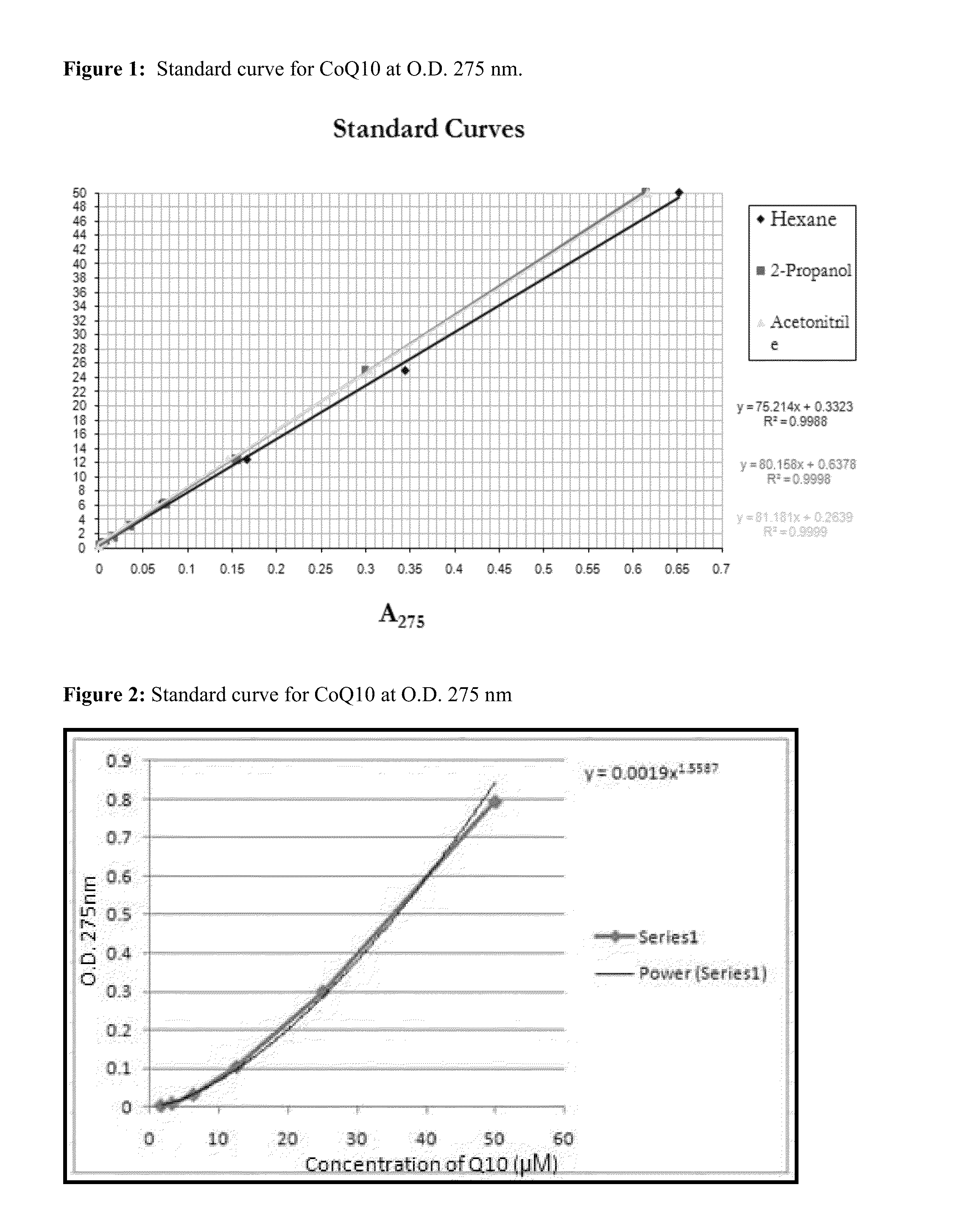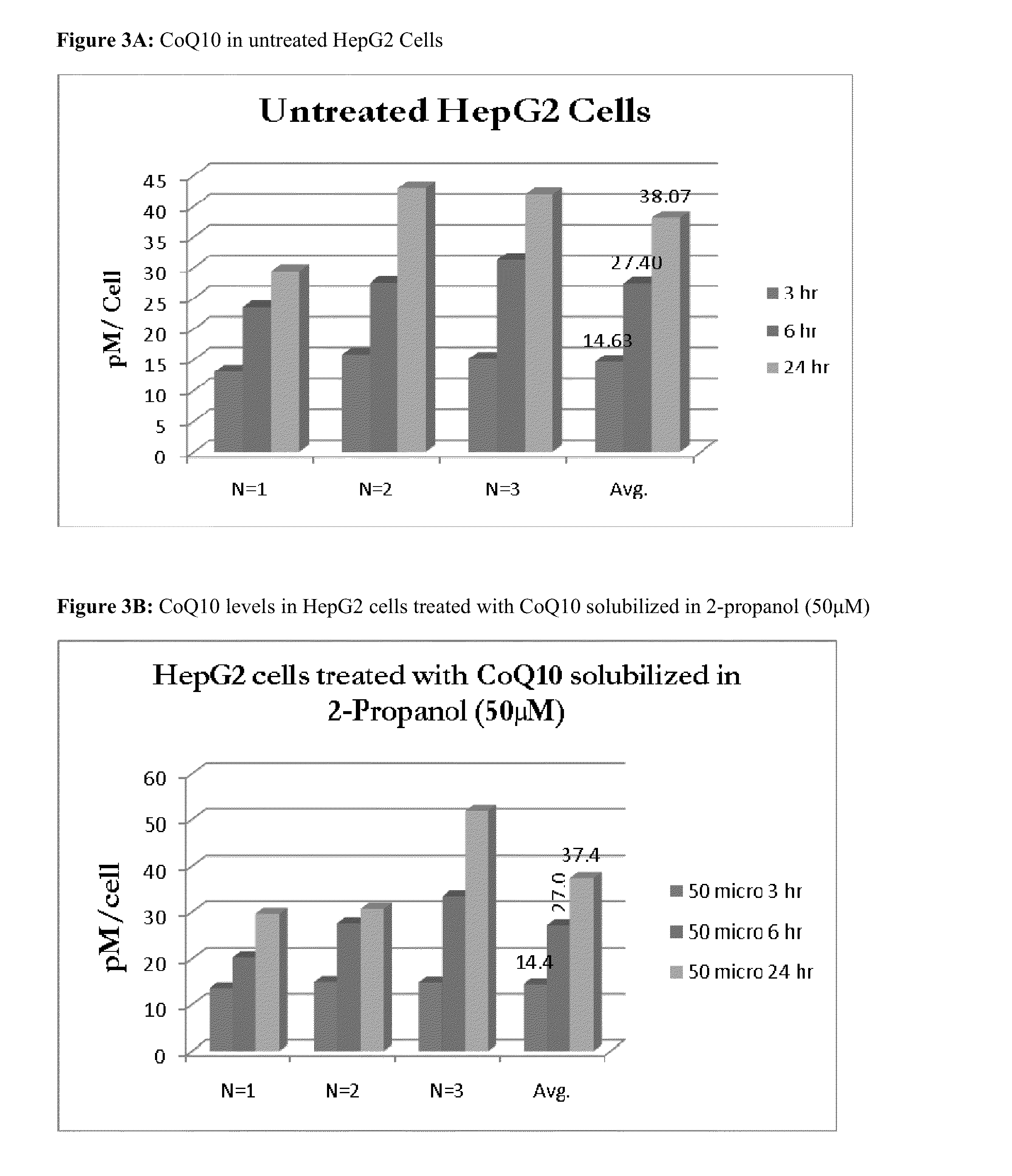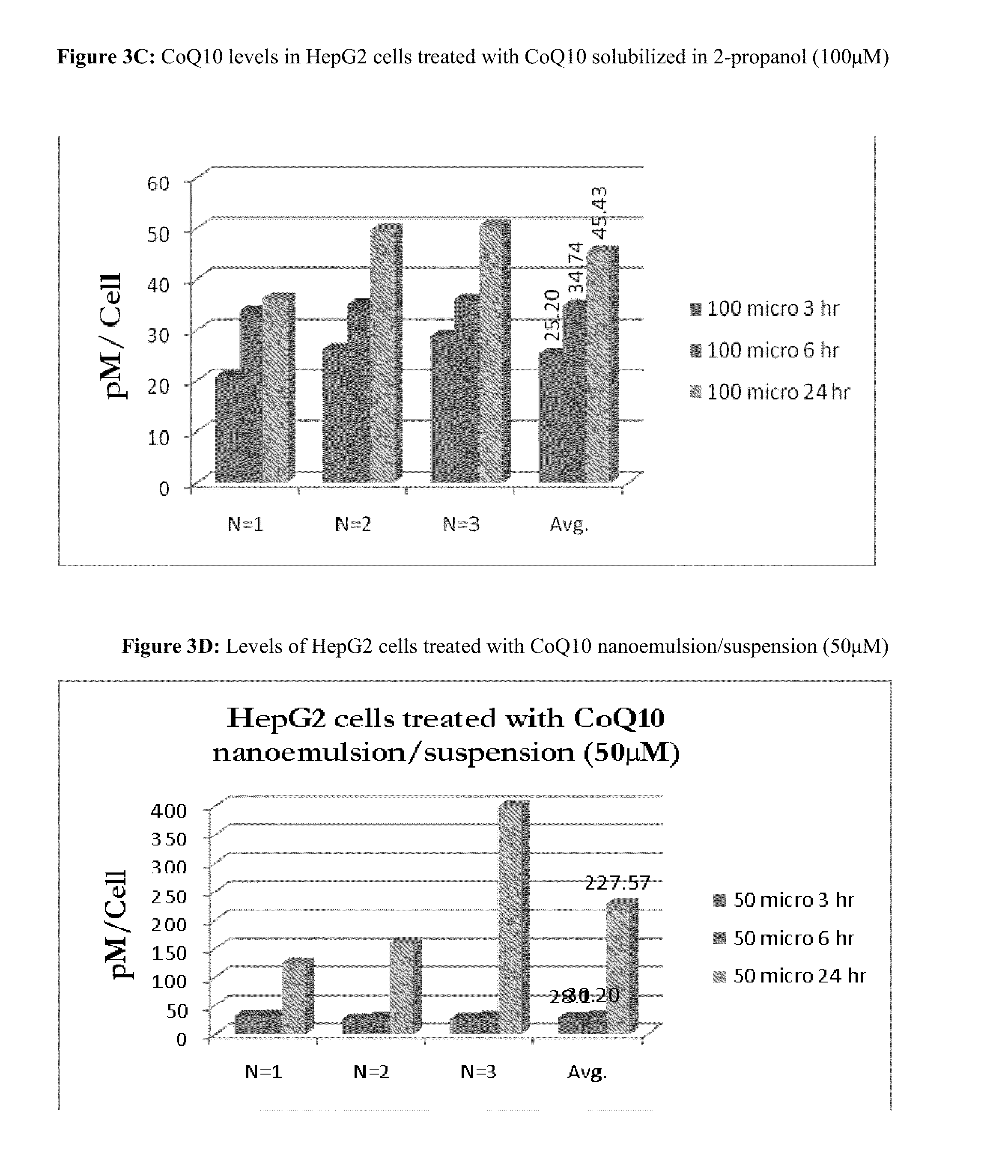Methods and kits for detection of coenzyme q10
a coenzyme and kit technology, applied in the field of methods and kits for detection of coenzyme q10, can solve the problems of increased risk of prostate cancer, increased risk of metastasis in melanoma patients, and increased risk of coenzyme q10 /sub>levels
- Summary
- Abstract
- Description
- Claims
- Application Information
AI Technical Summary
Benefits of technology
Problems solved by technology
Method used
Image
Examples
example 1
Materials and Methods
Cell Culture
[0231]The assay for quantitation of CoQ10 was used to determine the CoQ10 levels in various cells lines after CoQ10 treatment for various times. The cell lines used in the studies were the normal human aortic smooth muscle cells (HASMC), the hepatic cancer cell line HepG2, and the human pancreatic carcinoma cell line PaCa2. All cells lines are commercially available and were maintained according to instruction from the manufacturer / supplier of the cell lines.
Preparing CoQ10 Standard Solution
[0232]A 500 μM CoQ10 stock solution was prepared by weighing 4.32 mg of CoQ10 in a 15 ml conical tube, adding 10 ml of hexane, warming the tube in a water bath at 65° C. until the CoQ10 dissolved, and shaking the tube gently to mix the solution. A 100 μM and 50 μM CoQ10 stock solutions were prepared by diluting the stock solution in hexane.
Reagent Compositions
[0233]Buffer A (First extraction buffer): 100% Methanol
[0234]Buffer B (Surfactant / detergent): 1 mM Na-deox...
example 2
Generation of Standard Curves for CoQ10 Concentrations in Various Solvents
[0241]Various solvent systems were tested to optimize the extraction process. To determine optimal spectral properties of the solvent system during analysis using UV spectroscopic detection of CoQ10, standard curves were generated by spectroscopy. Three different solvents (2-propanol, acetonitrile, and hexane) were tested, using known concentrations of CoQ10.
[0242]To prepare a standard curve, a 50 μM CoQ10 stock was prepared in the appropriate solvent and serial dilutions of the stock were made. The OD275 of each of the samples from the serial dilution was measured at 275 nm in a UV spectrophotometer and plotted on a graph. The results of the standard curve preparation are presented in Table 2 and FIG. 1.
TABLE 2OD275 values for various concentrations of CoQ10 in different solventsConcentrationof CoQ10 (μM)Hexane2-PropanolAcetonitrile500.6520.6140.617250.3440.30.30412.50.1660.1540.1456.250.0690.0750.0653.130.03...
example 3
Quantitation of CoQ10 in Tissue Culture Cells Exposed to Varying Concentrations of CoQ10
[0244]Extraction of CoQ10 from Cell Samples
[0245]In the experimental trials, about 1×106 HASMC, HepG2, or PaCa2 cells were plated into each well of a 6 well plate. At the time of plating, the cells were treated with defined concentrations of CoQ10, in triplicate, in isopropanol or a proprietary CoQ10 delivery formulation for 3, 6, or 24 hours. After the defined incubation time, the cells were washed with cold TPBS (PBS with 100 mM Tris, pH 7.4), harvested by trypsinization, washed (2×) with 1 ml of TPBS, and pelleted by centrifugation at 1,500 RPM. Immediately after trypsinization, the cells were counted to determine the total number of viable cells in the sample.
[0246]Cell pellets were resuspended in 200 μL of Buffer A (first extraction buffer) and 10 μL of Buffer B (surfactant / detergent). Upon addition of Buffer B, the sample became opaque and a precipitate formed. The resuspended cells were tr...
PUM
 Login to View More
Login to View More Abstract
Description
Claims
Application Information
 Login to View More
Login to View More - R&D
- Intellectual Property
- Life Sciences
- Materials
- Tech Scout
- Unparalleled Data Quality
- Higher Quality Content
- 60% Fewer Hallucinations
Browse by: Latest US Patents, China's latest patents, Technical Efficacy Thesaurus, Application Domain, Technology Topic, Popular Technical Reports.
© 2025 PatSnap. All rights reserved.Legal|Privacy policy|Modern Slavery Act Transparency Statement|Sitemap|About US| Contact US: help@patsnap.com



